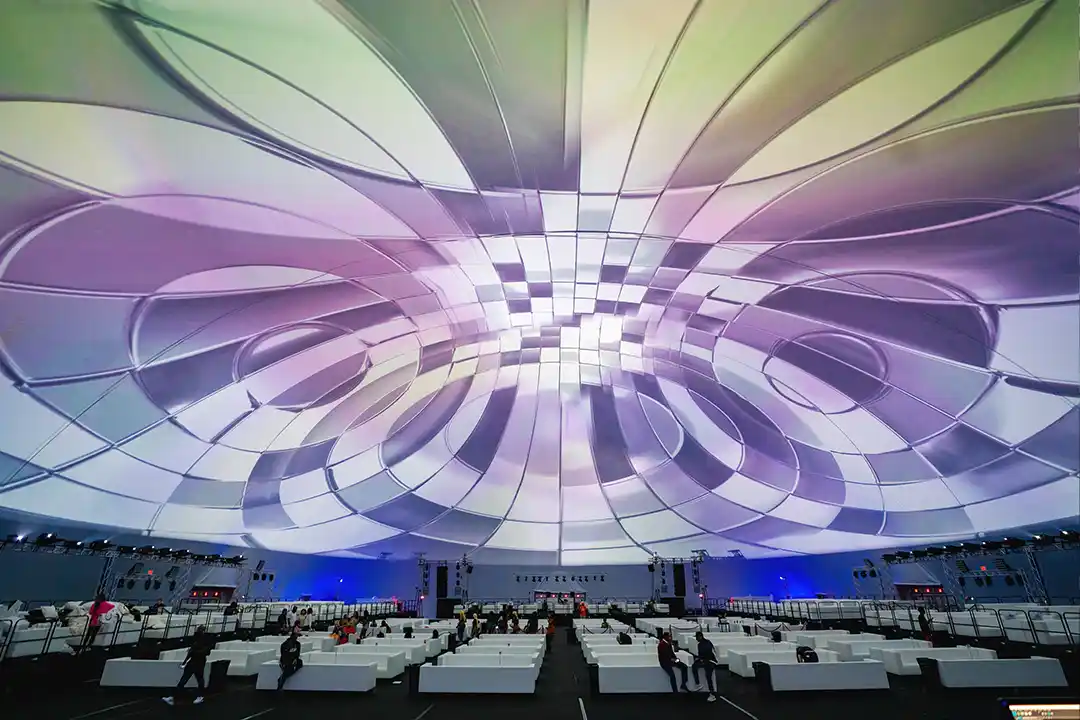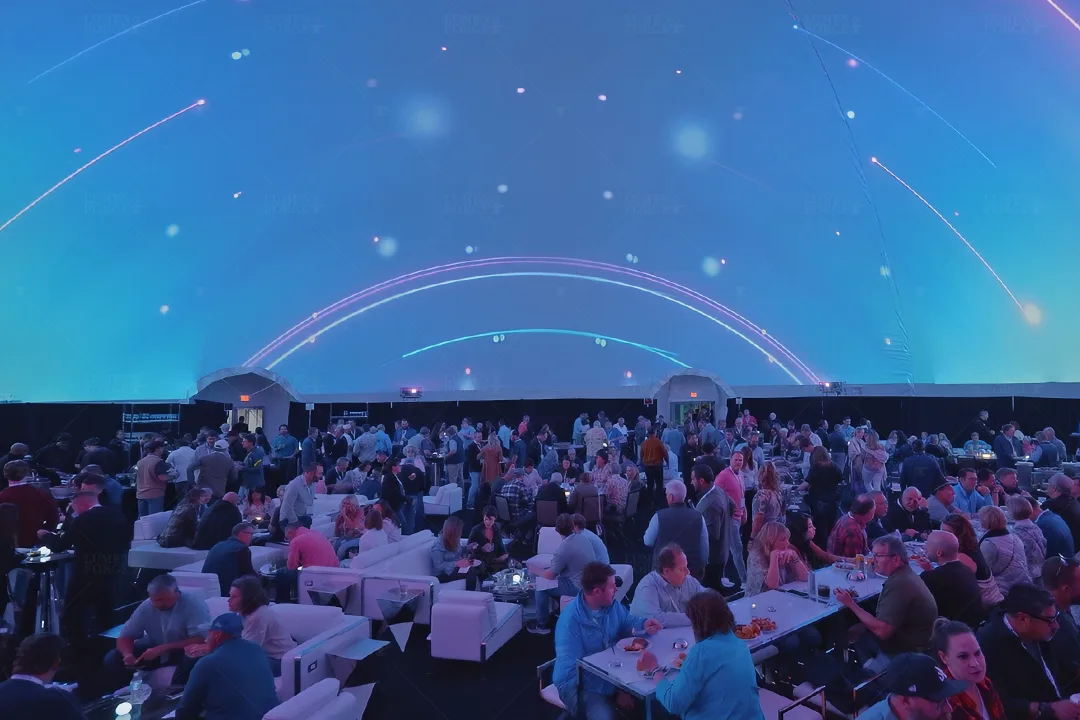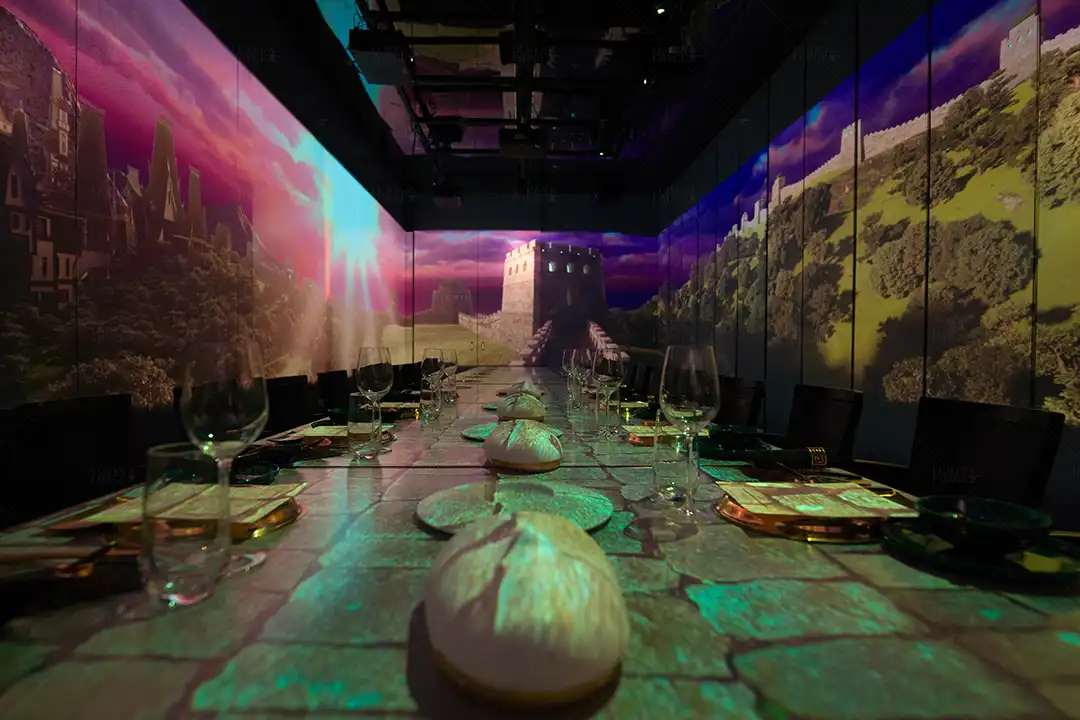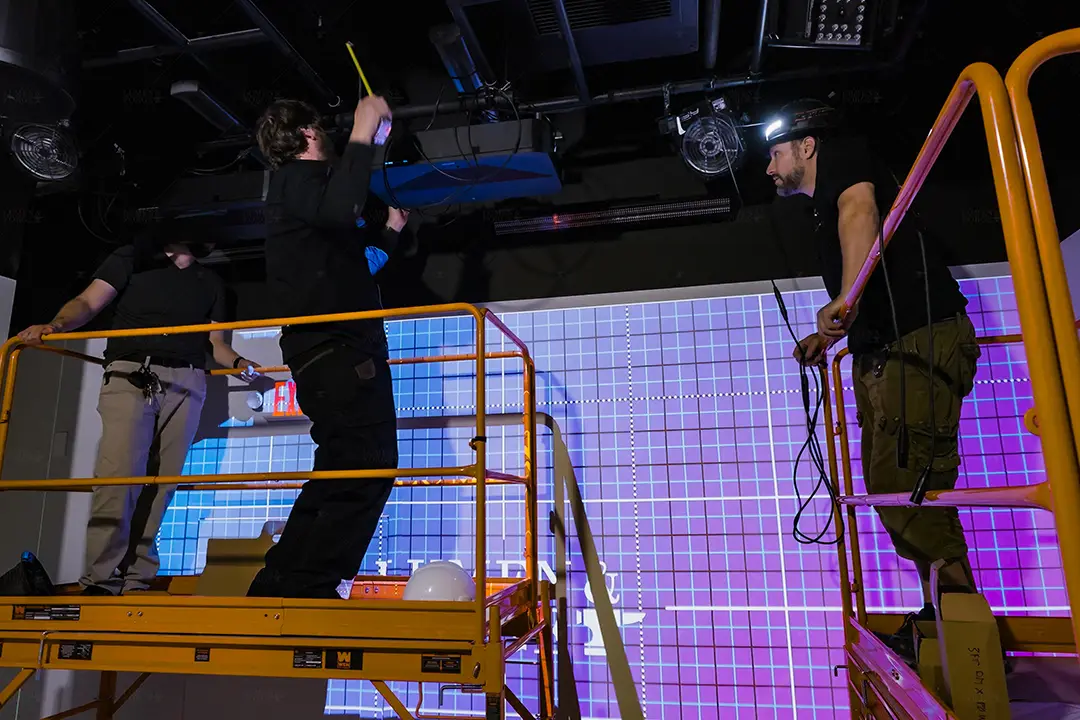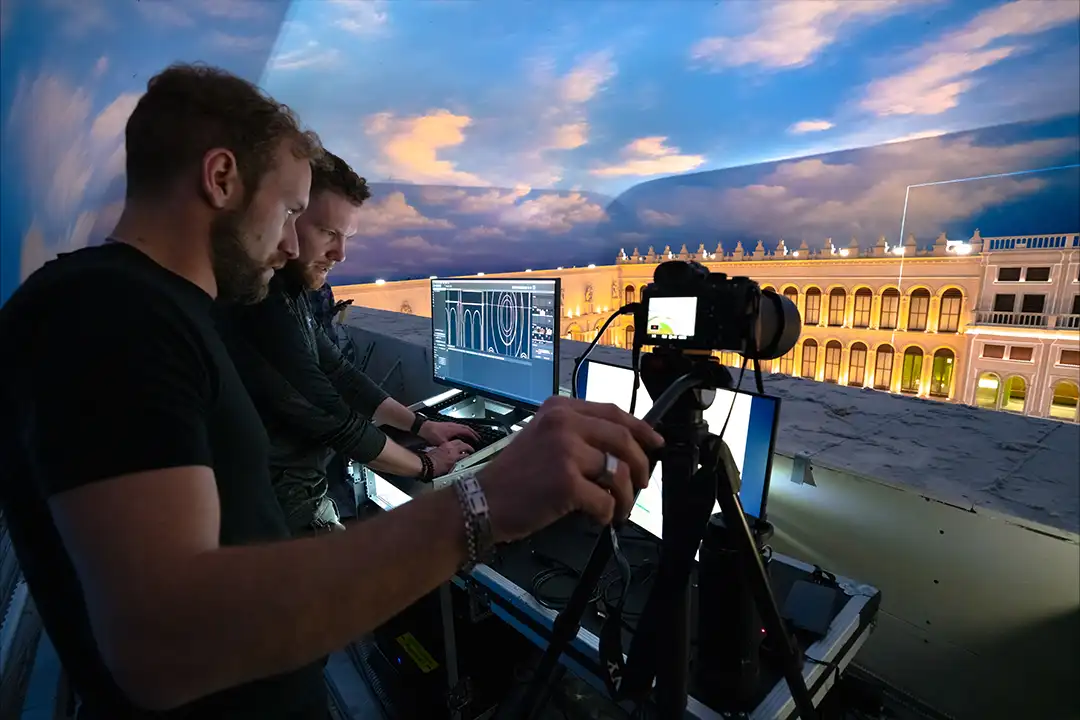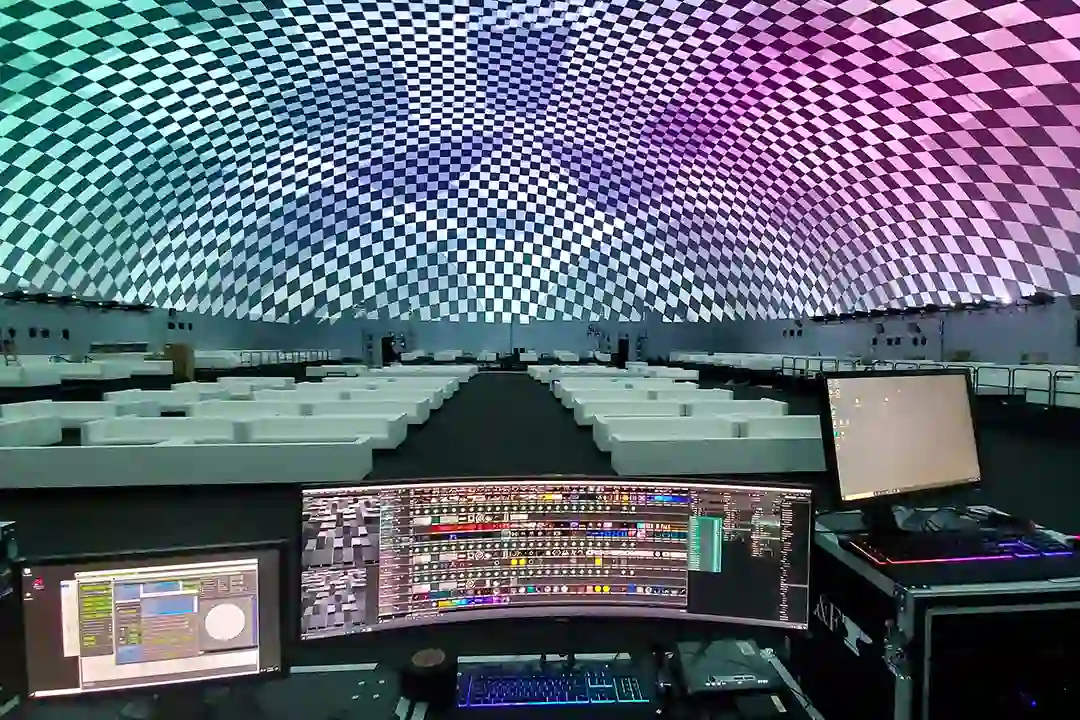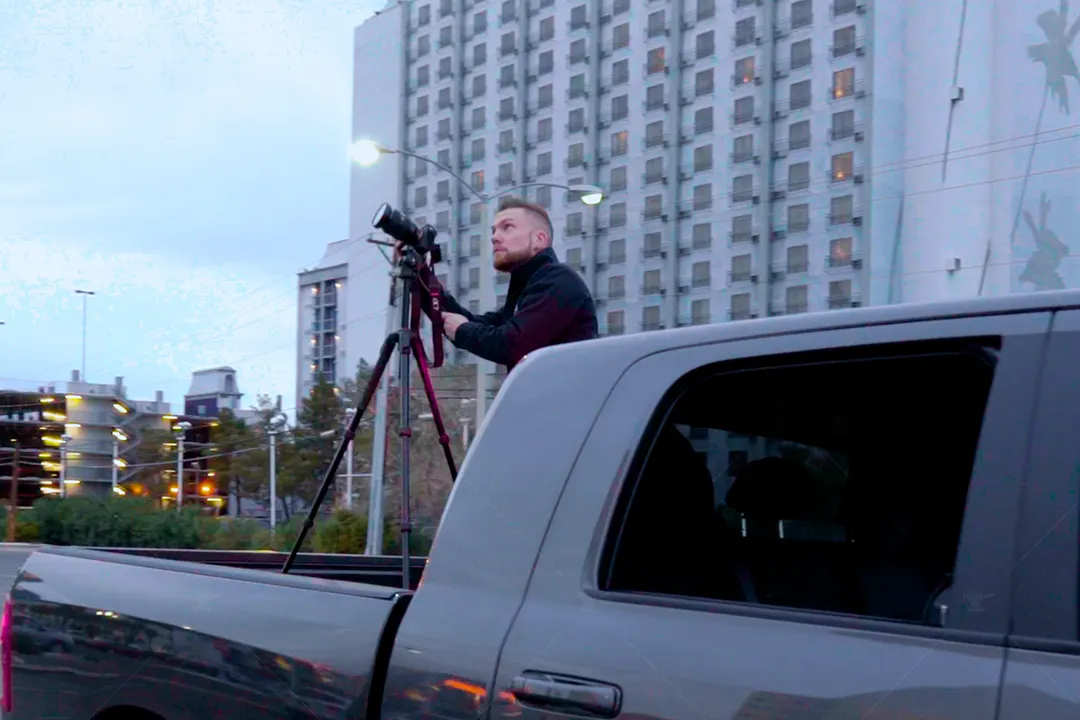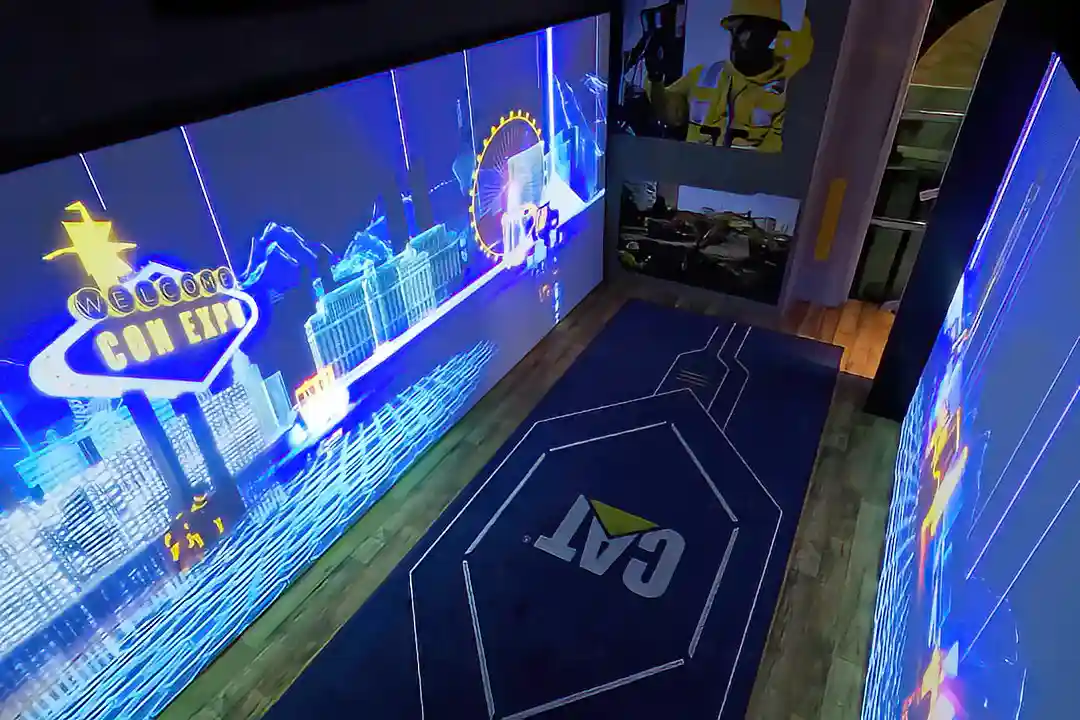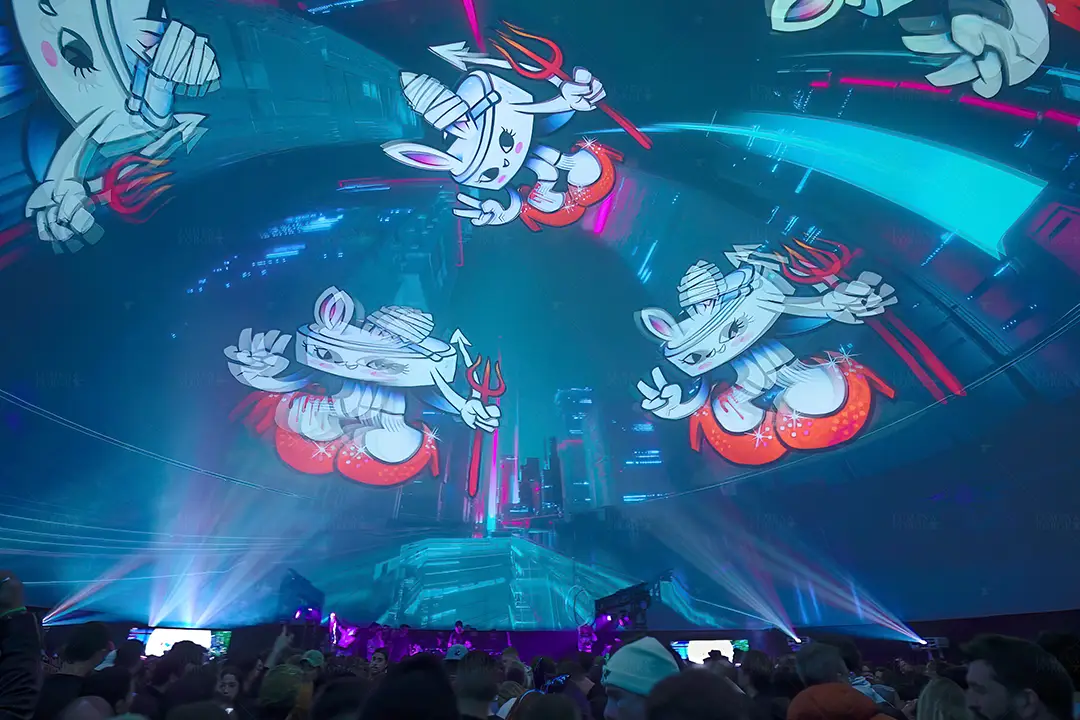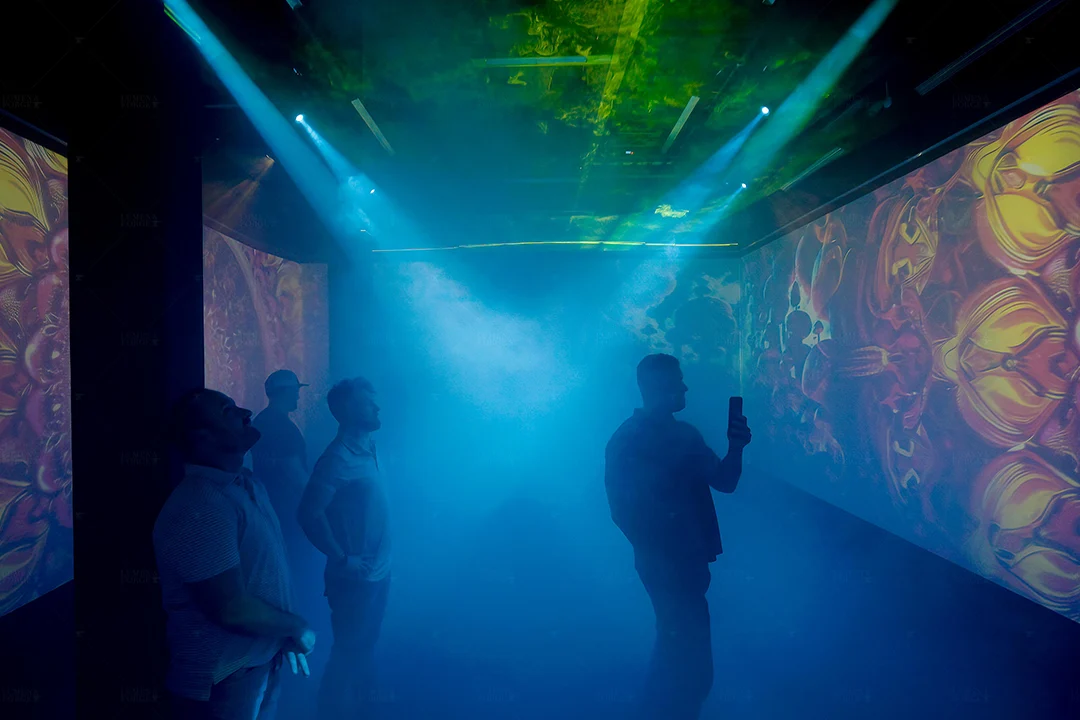Planning the right event for your brand or business is instrumental in turning visitors into customers. Whether you’re converting them on the day, or leaving a lasting impression that will encourage them to spread the word about your brand. The challenge lies in creating an experience that truly resonates with your audience and leaves a lasting impression.
One surefire way to get the attention of visitors is by using immersive experience design to craft an unforgettable experience. We’re going to talk about what immersive experience design is, as well as the benefits of adding it to your customer journey. By engaging multiple senses and creating interactive moments, immersive experiences can elevate your brand story in ways traditional marketing simply cannot.
Highlight Video of L&F's Immersive Experience at Dreambox 360
What is Immersive Experience Design?
At its core, immersive experience design is about creating environments that are so engaging that they captivate your imagination and transport you into an alternate reality. It goes beyond traditional viewing experiences by targeting all of the senses – sight, sound, touch, smell, and taste. In doing so, it transports users into a world where they can learn and explore in unparalleled ways.
This level of engagement naturally increases dwell time and significantly contributes to brand recall. Inspires users to become a part of the story, forming deeper memories and stronger connections with your brand. Active participation is known to be a core principle of creating long-lasting memories and developing deep psychological attachments to your story. These experiences are not about what, but about how you harness their attention. By allowing for their interaction and imagination to be a part of this journey, you create lasting memories and a sense of inclusion that captivates them for life.
Key Components of Immersive Experience Design
There are several components that can go into immersive experience design. We’re going to explore the variety of techniques that are often used, and how they can be applied to amaze and inspire.
Projection Mapping
Projection mapping is an essential tool for creating spaces that will truly envelop your audience. To go into some detail, projection mapping involves using projectors to cast images onto different types of surfaces, bringing objects or rooms to life.
Often, multiple projectors are used to create one continuous image that spans the room, edge-blending the projection to create a seamless visual experience. This becomes even more exciting and complex when mapping irregularly shaped objects or curved walls. However, it allows you to have complete control over what the attendees see in the space.
Projection mapping can be utilized for many types of internal or external applications. You can transform entire building facades, as seen with the largest video game screen in the world or map content onto something as small as a shoe. Your imagination is the key.
Highlight Video of L&F's Largest Video Game Screen in the World at the Tropicana
GENERAL PRE-PRODUCTION STEPS (BOTH SINGLE & MULTIPLE PROJECTORS)
1. Site Survey & Surface Analysis
- Measure and document surface dimensions, geometry, and texture.
- Photograph or scan (via photogrammetry or LIDAR) for 3D modeling.
- Note ambient light, projector mounting constraints, and viewing angles.
2. 3D Model Creation
- Use tools like Blender, Cinema4D, or RealityCapture to create a 3D model of the projection surface.
- Import this model into your projection mapping software.
3. Content Creation
- Design motion graphics or visual assets tailored to the 3D geometry of the surface.
- Software: After Effects, Notch, TouchDesigner, Unreal Engine, Cinema 4D, etc.
- Keep in mind occlusions, contours, and color reflectivity.
SINGLE PROJECTOR PROCESS
4. Projector Selection & Placement
- Choose a projector with suitable brightness (based on surface area and ambient light), throw ratio, and resolution.
- Physically place the projector to cover the full area, avoiding extreme keystone angles.
5. Calibration and Warping
- Use software like MadMapper, Resolume Arena, HeavyM, or TouchDesigner to:
- Manually or automatically align your content.
- Warp (mesh or point-based) the image to fit surface contours.
6. Masking & Blending
- Mask out unused or undesirable areas.
- Fine-tune contrast, brightness, and color correction for the specific surface.
7. Playback & Show Control
- Use a media server or PC with software for playback and looping.
- Optional: Integrate show control via Network, UDP, TCP, MIDI, OSC, or Timecode.
MULTIPLE PROJECTOR PROCESS
All steps above apply, plus these key additions:
8. Projector Layout & Coverage Planning
- Use projection simulation tools to simulate projector coverage and do your projection study.
- Ensure overlapping zones for edge blending and uniform brightness.
9. Alignment & Edge Blending
- Calibrate each projector manually or with auto-alignment tools (e.g., Scalable Display, VIOSO).
- Blend overlapping areas to ensure seamless transitions using feathering and gamma correction.
10. Projection Mapping Software Integration
- Configure all projectors as part of a single canvas (spanned display or via media server).
- Use mapping software to warp and blend content across multiple outputs.
11. Synchronization
- Ensure all projectors are time-synced, often via a central server or genlock if necessary.
- Use software like Disguise, Watchout, or TouchDesigner, etc. for unified control.
Projection mapping is commonly used in experiential art exhibitions, like those by teamLab in Japan, immersive museums, marketing activations, projection domes, restaurants and more. Restaurant environments, in particular, offer excellent opportunities to enhance the dining experience and transform spaces into magical worlds.
One classic application of projection technology that we’re all familiar with is planetariums, which are essentially specialized projection domes. Modern projection domes have evolved from this concept and now offer portable, versatile solutions for a wide range of experiences. These projection domes can be deployed for marketing events, tradeshows, educational experiences, and even as portable planetariums themselves. The flexibility of projection domes makes them ideal for brands looking to create memorable, immersive environments in virtually any setting.
Interactive Environments
Interactive elements give the audience something they’re lacking in a traditional viewing experience – control. This can be implemented through technologies like motion sensors, pressure pads, RFID, and cameras, allowing guests to directly shape their environment in real-time. Unlike virtual reality (VR) and some forms of augmented reality (AR), which provide some level of interactiveness in an isolated environment, this gives customers a chance to interact in a tactile way.
In terms of application, interactive elements can be applied almost anywhere. For exhibits, you can have it so that the entire theme of the room changes at the push of a button. Or, in retail, you can use motion-activation that show product information once someone steps up to the display. Want to offer personalized experiences based on who’s entering the environment? RFID badges give you the opportunity to control content delivery, like which guests see what as they move through the space.
Scent & Environmental Control
Smell, temperature, airflow, and humidity are often-overlooked senses that are immediately noticeable to guests due to how rarely they’re utilized. Using scent dispersion systems, HVAC integration, and environmental effect systems, you can complement the digital environment with physical sensations that place them in the scene.
Scent diffusers can release bursts of fragrances that are tied to narrative cues, while directional fans and heaters can simulate shifts in temperature. Let me paint a picture in your mind. Imagine you’re walking through a pine forest. There’s a slight chill from the breeze, the faint smell of pine, and shifts in temperature as you walk through spots of sun. Or, you could be at sea in a thunderstorm, being battered by strong winds and the spray of salt water. It’s enough to convince the senses you’re actually there – even for a moment. Scent has been shown to activate long lost memories and create a sense of nostalgia.
Augmented Reality
AR is the blend of the real world and a digital one. Unlike VR, which completely simulates a digital environment, AR overlays digital content onto the real world, in real-time. This can be achieved through smartphones, tablets, AR glasses, headsets and creative programming. One way to think of it as your own personal heads-up display (HUD) that can display images and other data.
In the context of immersive experience design, it can encourage user engagement when done strategically. For instance, you can create a location-based AR experience where visitors can explore and learn more about your products or services through digital displays. For museums and historical sites, it can be used as a guide, painting digital pathways to the exhibits they’d like to see. Or gamify your experience so you encourage consumers to return.
How Immersive Experience Design Can Reinvent the Customer Journey: Some Examples
While understanding immersive experience design in theory is useful, seeing some examples for reference helps demonstrate its real-world impact. Let’s briefly look at some ways that immersive experience design has already been implemented.
Immersive Experience Design for the “World’s Largest Projection Dome”
The Dome in Miami utilized advanced technologies including large-scale projection mapping, custom 6K Domemaster content, high-lumen laser projectors, and real-time VJing to create a fully immersive nightclub experience.
Lumen & Forge designed and constructed the world’s largest dome structure, integrated strategic AV and lighting setups, and deployed ultra high-performance custom Lumen and Forge Anvil Media servers – for live content mixing and uncompressed playback. The system powered 24 synchronized 18,000 lumen laser projectors, calibrated precisely to the dome’s pill-shaped surface, delivering seamless, visually captivating content across 40,000 sq ft and enhancing live performances for over 60,000 attendees.
L&F's Dome in Miami Highlights
Off-Road 4D Experience Dome for Jeep
For the Jeep Dome 4D immersive theater, Lumen & Forge utilized a range of technologies to create a multisensory experience that simulated off-road driving in a Jeep Wrangler Rubicon. A 30-foot geodesic dome equipped with a custom projection system consisting of ten 5,000 lumen HD laser projectors blended into a seamless 6K Domeaster, a full 360° display.
Additional technologies included heated seats, scent machines, wind effect fans, and a 5.1 Adams Fog audio system to deliver synchronized physical, auditory, and olfactory effects. The experience was powered by the proprietary Lumen & Forge Anvil Dome Master server system, ensuring seamless content delivery and environmental integration for a fully immersive 4D simulation.
L&F's 4D Immersive Theater Dome for Jeep
An Immersive Dining Experience at The X POT
For The X Pot immersive dining experience, Lumen & Forge employed projection mapping, interactive lighting, and thematic soundscapes to transform the restaurant environment into a multisensory 5D experience. This project used 10 Optoma projectors and a custom-built projection server to create 360-degree visuals around the room and across dining surfaces, including a custom-fabricated, projection-ready aluminum tabletop.
The integration of audiovisual content, dynamic lighting, and ambient sound created a fully immersive atmosphere, blending culinary artistry with digital innovation. Ongoing technical support and content updates ensure the experience remains cutting-edge and continuously engaging for guests.
The X Pot Immersive Dining Experience
Immersive Experience Design by Lumen & Forge
As with any event, it all comes down to planning. If you’re interested in using immersive experience design to create an event that will be remembered for years to come, consider Lumen & Forge. We can handle everything, from ideation and technical planning to content creation and execution.
We are more than a company—we are architects of experience, shaping the future of immersive storytelling, one revolutionary project at a time.
Get in touch, and we can discuss how to bring your idea to life.

